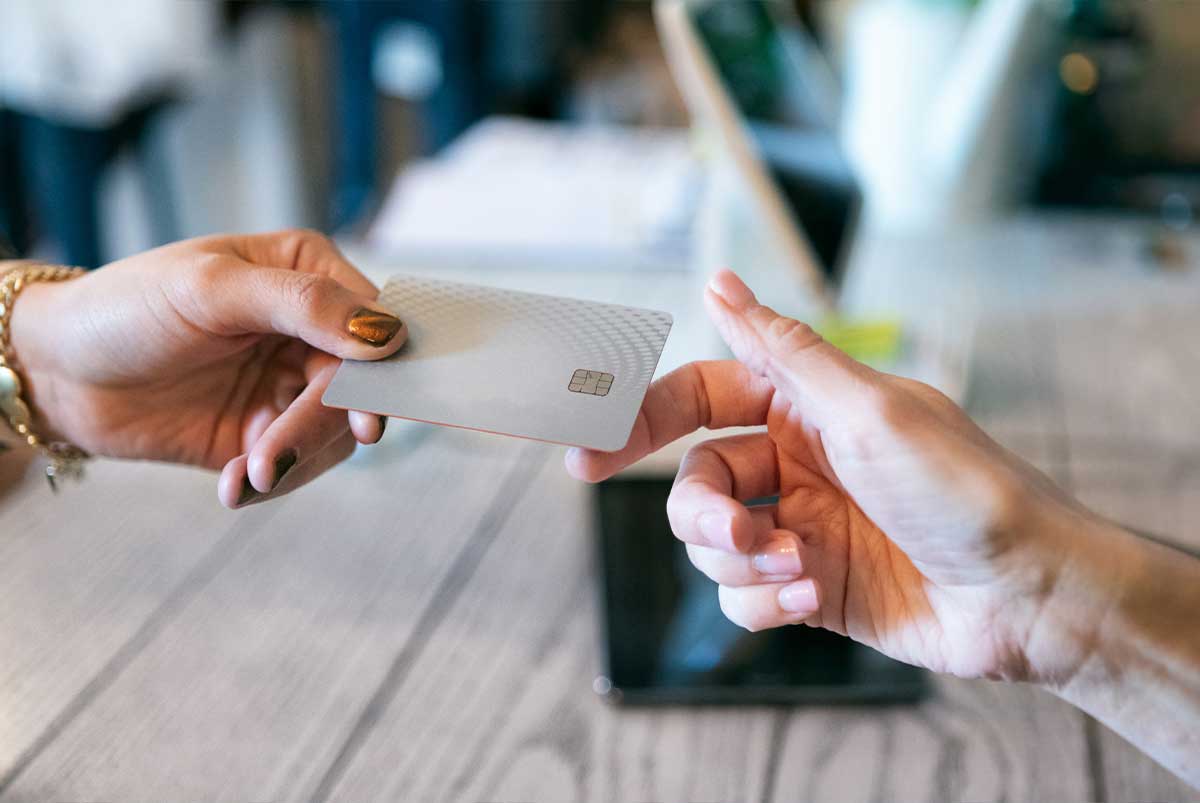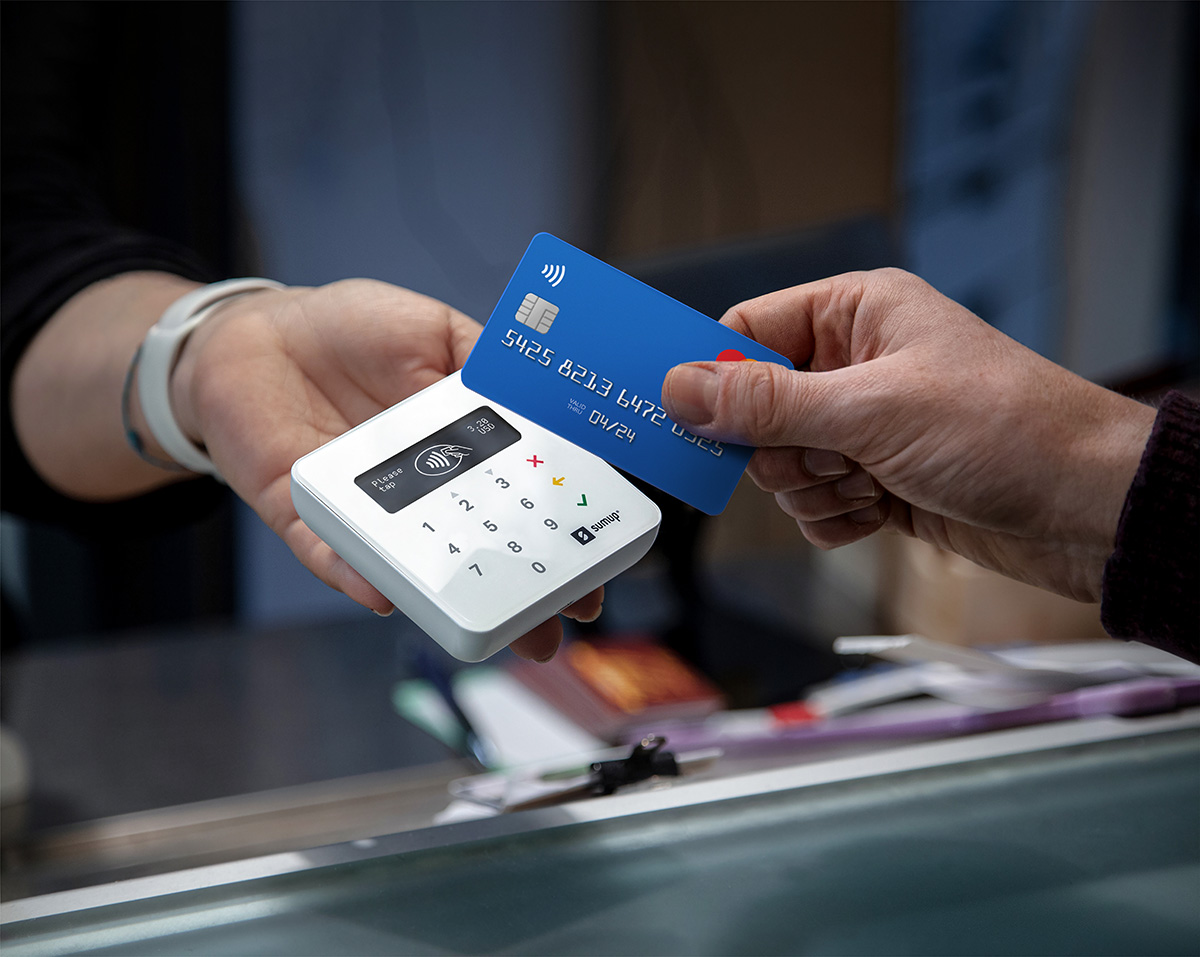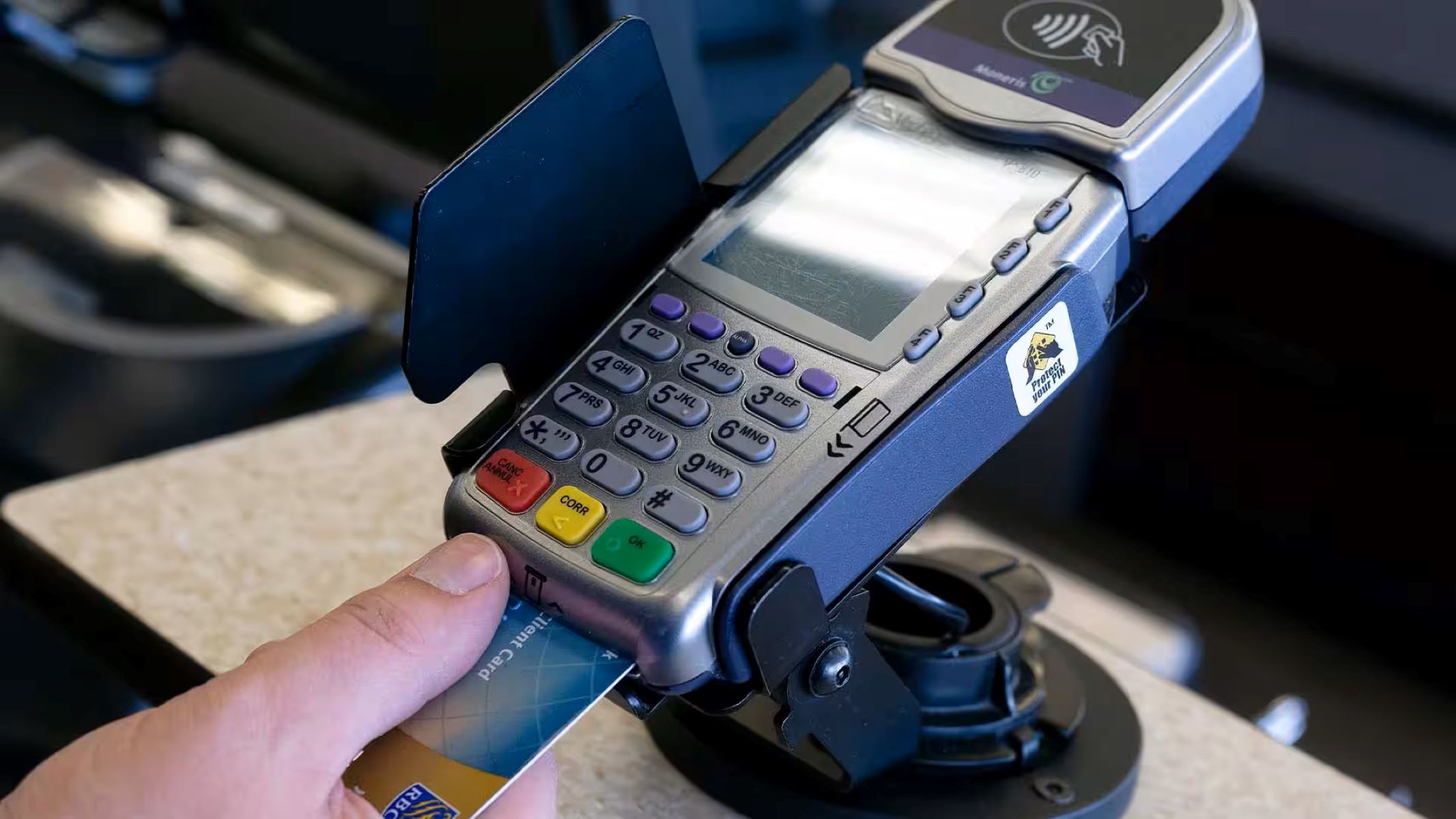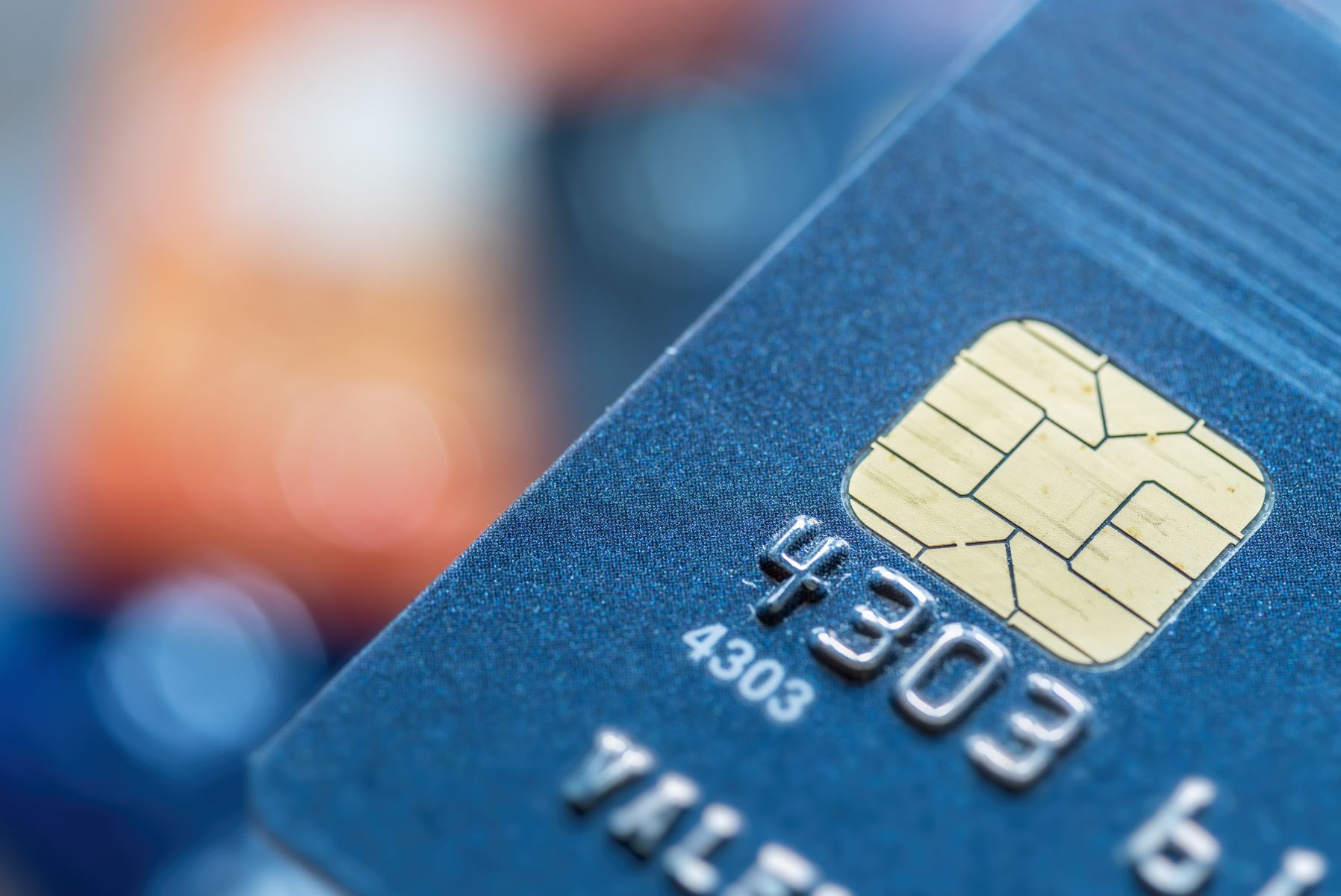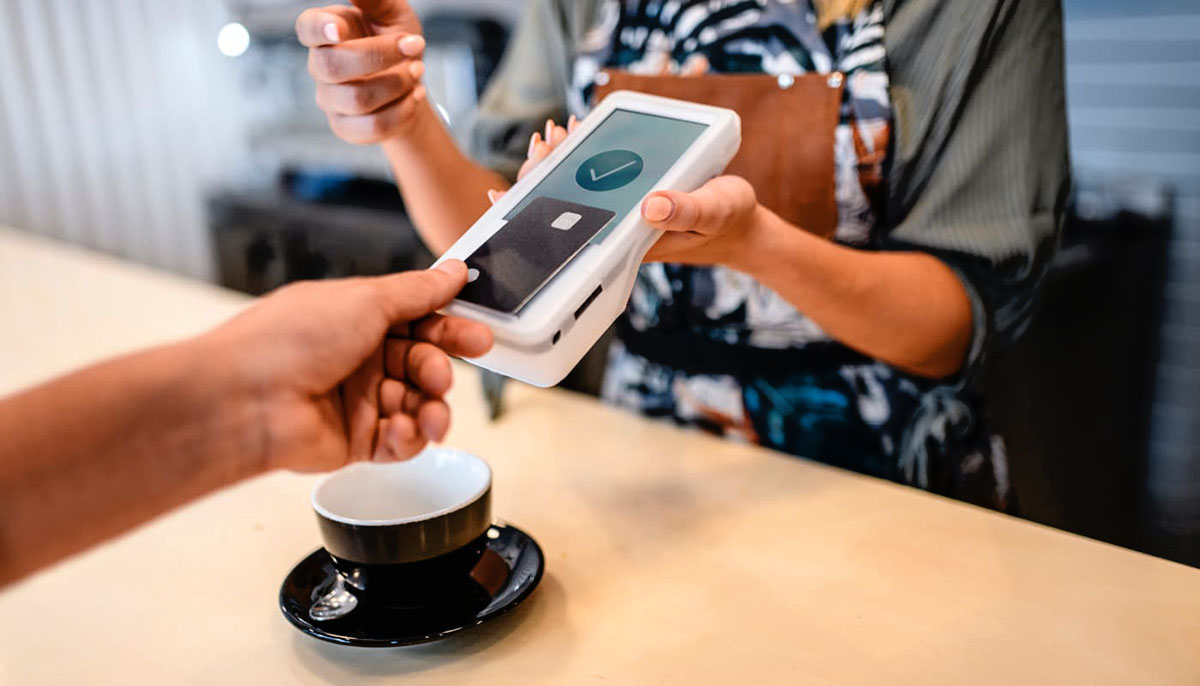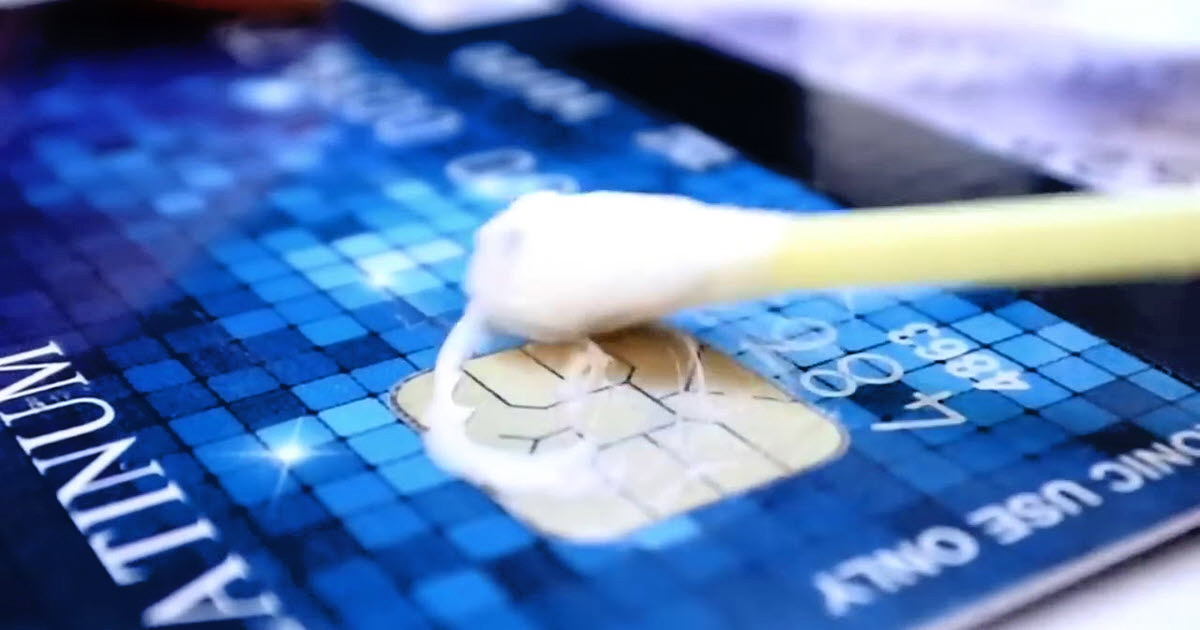

Finance
How To Clean Credit Card Chip
Published: November 6, 2023
Learn how to clean the credit card chip for improved security and financial peace of mind. Discover simple steps to maintain your finance and protect your valuable information.
(Many of the links in this article redirect to a specific reviewed product. Your purchase of these products through affiliate links helps to generate commission for LiveWell, at no extra cost. Learn more)
Table of Contents
Introduction
With the increasing usage of credit cards in our daily lives, it is essential to ensure that our cards are in optimal condition. One crucial element of credit cards is the chip embedded within them. This chip contains sensitive information and allows for secure transactions.
While credit card chips are designed to be durable and long-lasting, they still require proper care and maintenance to ensure their functionality. Cleaning the credit card chip regularly is an important step in maintaining its effectiveness and longevity. However, many people are unsure of how to clean their credit card chips without causing damage.
In this article, we will guide you through the step-by-step process of cleaning credit card chips effectively. We will provide insights into the reasons behind cleaning credit card chips, the necessary tools and materials, and share valuable tips for maintaining clean credit card chips. By following these instructions, you can ensure that your credit card remains in top-notch condition and performs flawlessly during every transaction.
Understanding Credit Card Chips
Credit card chips, also known as EMV chips (Europay, Mastercard, and Visa), are microprocessor-based security features embedded in modern credit cards. They were introduced to enhance the security of card transactions, replacing the traditional magnetic stripe technology.
The chip is a small, metallic square located on the front or back of the credit card. It contains encrypted data that is securely transmitted during a transaction, providing a unique authentication code for each purchase made. This advanced technology makes it extremely difficult for fraudsters to counterfeit or clone credit cards.
The chip stores essential information, including the cardholder’s account number, name, expiration date, and a cryptographic key. During a transaction, the chip creates a unique transaction code that cannot be duplicated, offering a higher level of security compared to magnetic stripe cards.
When inserted into a card reader or tapped against a contactless payment terminal, the chip communicates with the terminal to complete the transaction. This process is referred to as “card present” transactions, as the physical presence of the card is required to authorize the payment.
Additionally, credit card chips utilize dynamic data authentication (DDA) or static data authentication (SDA) methods to further verify the card’s authenticity. DDA involves a unique digital signature for each transaction, while SDA uses a pre-verified static signature.
Overall, understanding how credit card chips work is crucial for ensuring secure transactions and protecting your financial information. By keeping the chip clean and well-maintained, you can minimize the risk of transaction errors and ensure reliable use of your credit card.
Reasons for Cleaning Credit Card Chips
Cleaning your credit card chip may seem like an unnecessary task, but there are several compelling reasons why it is essential to keep it in pristine condition. Here are a few reasons why maintaining clean credit card chips is crucial:
- Improved Functionality: Over time, dirt, dust, and grime can accumulate on the surface of the chip. This buildup can affect the chip’s ability to make a proper connection with the card reader, leading to transaction errors or rejections. By cleaning the chip regularly, you can ensure optimal connectivity and smooth transaction experiences.
- Enhanced Card Longevity: A clean credit card chip is less likely to suffer from damage or malfunction. When the chip is dirty, contaminants can cause corrosion and potentially disrupt the functionality of the chip itself. By cleaning away dirt and debris, you can extend the lifespan of your credit card and avoid potential issues.
- Reduced Risk of Payment Failures: A dirty or damaged chip might result in frequent failed payment attempts. This can cause inconvenience and frustration, leading to delays in completing transactions. By keeping the chip clean, you can minimize the risk of payment failures and ensure a smoother payment experience.
- Protection from Security Threats: Dust and debris on the chip surface can interfere with the chip’s ability to generate a unique transaction code. This code is crucial for secure and encrypted transactions. If the code is compromised due to a dirty chip, it can increase the risk of fraudulent activities and unauthorized transactions. Regular cleaning reduces the chances of security breaches and protects your financial information.
- Improved Aesthetics: Let’s not forget about the visual appeal of your credit card. A clean and well-maintained chip reflects positively on its overall condition. By giving your credit card chip a regular cleaning, you can keep your card looking fresh and presentable.
By being proactive in cleaning your credit card chip, you can ensure its optimal functionality, longevity, and security. It is a simple yet effective maintenance practice that helps you enjoy hassle-free transactions while safeguarding your financial information.
Tools and Materials Needed
Cleaning your credit card chip requires minimal tools and materials. Most of these items can be found easily at home or purchased inexpensively. Here are the tools and materials you will need:
- Microfiber Cloth: A microfiber cloth is a gentle and effective tool for cleaning the credit card chip. This soft fabric helps remove dirt and smudges without scratching or damaging the chip’s surface.
- Isopropyl Alcohol: Isopropyl alcohol, also known as rubbing alcohol, is a common household cleaning agent. It is ideal for cleaning credit card chips, as it evaporates quickly without leaving residue behind. Be sure to use isopropyl alcohol with a concentration of at least 70%.
- Cotton Swabs: Cotton swabs, also known as Q-tips, are useful for reaching small and hard-to-reach areas on the chip. They can help clean the edges of the chip and remove stubborn dirt or debris in tight spaces.
- Compressed Air: Compressed air in a can is an optional tool that can be used to blow away dust and debris from the chip. It provides a quick and effective method to clean hard-to-reach areas without direct contact.
It is important to note that using abrasive materials or harsh cleaning agents, such as abrasive sponges or chemicals like acetone or bleach, should be avoided. These can damage the chip’s protective coating or other components and compromise its functionality.
By gathering these simple tools and materials, you will have everything you need to clean your credit card chip effectively and safely.
Step-by-step Guide to Cleaning Credit Card Chips
Properly cleaning your credit card chip is a straightforward process that can be done at home. Follow these step-by-step instructions to ensure a thorough and safe cleaning:
- Gather Your Materials: Collect the necessary tools and materials, including a microfiber cloth, isopropyl alcohol, cotton swabs, and compressed air (optional).
- Power Off Your Device: Before cleaning the chip, power off any device that may be connected to the card to prevent accidental transactions.
- Dampen the Cloth: Moisten the microfiber cloth with a small amount of isopropyl alcohol. Make sure the cloth is damp, but not soaked.
- Gently Wipe the Chip Surface: Using the dampened cloth, gently wipe the surface of the chip in a circular motion. Ensure that you cover the entire surface, including the edges.
- Use Cotton Swabs for Edges: Dip a cotton swab in isopropyl alcohol and carefully clean the edges of the chip. Be gentle to avoid applying excessive pressure that could damage the chip.
- Blow Dust Away (Optional): If you have compressed air, you can use it to blow away any remaining dust or debris from the chip. Hold the canister a few inches away from the chip and use short bursts of air. Do not shake the canister vigorously.
- Allow the Chip to Dry: After cleaning, allow the chip to air dry completely before inserting it back into the card reader or mobile device.
- Power On and Test: Once the chip is dry, you can power on your device and test the credit card chip’s functionality by making a small transaction.
Remember to handle the credit card chip with care and avoid applying excessive pressure during the cleaning process. It is also advisable to clean the chip in a well-lit area to ensure you can see any dirt or smudges clearly.
By following these steps, you can effectively clean your credit card chip, ensuring its optimal performance and longevity.
Tips for Maintaining Clean Credit Card Chips
Keeping your credit card chip clean is important for its functionality and longevity. Here are some helpful tips to maintain a clean credit card chip:
- Regularly Wipe the Chip: Make it a habit to wipe the chip with a microfiber cloth regularly. This prevents the buildup of dirt and debris, keeping the chip clean and free from potential issues.
- Avoid Touching the Chip: Try to minimize touching the chip with your fingers or other objects. Oils and dirt from your hands can transfer to the chip and affect its performance. Hold the card by the edges to reduce contact with the chip.
- Avoid Exposing the Chip to Liquids: Protect your credit card chip from exposure to liquids that could damage it, such as water, liquids with high alcohol content, or cleaning solutions. If the chip does get wet, dry it thoroughly before using it.
- Store the Card Properly: Keep your credit card in a proper cardholder or wallet that provides protection from dust and debris. Avoid placing it in pockets with other items that could cause scratches or damage to the chip.
- Use Contactless Payment Methods: Whenever possible, utilize contactless payment methods like tapping your card on a contactless payment terminal. This reduces the need for physical insertion and minimizes the wear and tear on the chip.
- Regularly Inspect Your Credit Card: Take the time to inspect your credit card for any signs of damage, such as cracks on the chip or physical abnormalities. If you notice any issues, contact your card issuer for a replacement.
- Be Mindful at ATMs and Card Readers: When using ATMs or card readers, ensure that the slot is free from dirt or debris before inserting your card. If you notice any abnormalities or resistance during the insertion process, avoid forcing the card and notify the relevant authority.
- Keep Your Personal Information Secure: Protect your credit card and your personal information by being vigilant about its usage. Avoid sharing your card details with unauthorized individuals and regularly monitor your transactions for any suspicious activity.
By following these tips, you can maintain a clean and well-functioning credit card chip, ensuring smooth transactions and peace of mind regarding the security of your financial information.
Common Mistakes to Avoid
While cleaning your credit card chip is a simple task, there are a few common mistakes that you should avoid to prevent any damage or issues. Here are some mistakes to be mindful of:
- Using Abrasive Materials: Avoid using abrasive materials like rough cloths, scrub brushes, or abrasive sponges to clean the chip. These can scratch or damage the chip’s delicate surface and compromise its functionality.
- Using Harsh Chemicals: Harsh cleaning agents such as acetone, bleach, or ammonia can corrode the chip and affect its performance. Stick to isopropyl alcohol, which is safe and effective for cleaning the chip without causing damage.
- Applying Excessive Pressure: Be gentle when cleaning the chip, and avoid applying excessive pressure. Pressing too hard or using excessive force can lead to deformation, scratches, or even detachment of the chip from the card.
- Ignoring Cardholder Guidelines: Different credit card issuers may have specific guidelines or recommendations for cleaning their cards. It is important to familiarize yourself with these guidelines and follow them to avoid any potential issues.
- Cleaning While the Card is Inserted: Never attempt to clean the chip while the card is inserted in a device or a payment terminal. This can lead to accidental transactions or damage to the chip or the device.
- Using Wet Cleaning Methods: Avoid using wet cleaning methods that involve submerging or soaking the credit card or chip in water or any other liquid. Moisture can seep into the chip and damage its internal components.
- Overlooking Physical Damage: Regularly inspect your credit card for any signs of physical damage, such as cracks or chips on the chip’s surface. If you notice any damage, contact your card issuer for a replacement to prevent potential issues during transactions.
- Skipping Regular Cleaning: Neglecting to clean your credit card chip regularly can lead to the accumulation of dirt, dust, and debris, impacting its functionality. Make it a habit to clean the chip at regular intervals to maintain its performance.
By avoiding these common mistakes, you can ensure the proper care and maintenance of your credit card chip, extending its lifespan and preserving its functionality.
Conclusion
Cleaning your credit card chip is a simple yet essential task that should not be overlooked. By maintaining a clean chip, you can ensure optimal functionality, reliability, and security during your transactions. Taking the time to clean your credit card chip regularly can help prevent transaction errors, payment failures, and potential security breaches.
We have discussed the importance of understanding credit card chips and their role in secure transactions. We have also provided a step-by-step guide to effectively clean your credit card chip, along with tips for maintaining its cleanliness and avoiding common mistakes.
Remember, always handle your credit card chip with care, using the appropriate tools and materials. Avoid abrasive materials, harsh chemicals, and excessive pressure that could damage the chip. Following these guidelines will help you maintain a clean and functional credit card chip.
By incorporating these practices into your routine, you can enjoy hassle-free transactions, increased card longevity, and enhanced security. So, take the time to clean your credit card chip regularly and keep your financial information safe and accessible.
